30 Types of Cacti in New Mexico (With Pictures)
-
Greg Iacono
- Last updated:

New Mexico is home to several species of cactus, which are found throughout the state. The wide variety of fascinating plants is a delight for anyone who appreciates unique species. If that happens to be you, and you’d like to know more about the cacti in New Mexico, read on! We have descriptions of all 30 of them below. You’ll notice that many of the cactus specie are “chollas.” A cholla is a shrubby cactus with cylindrical joints and spines that look like needles.
The 30 Types of Cacti in New Mexico
1. Chihuahuan Pineapple Cactus
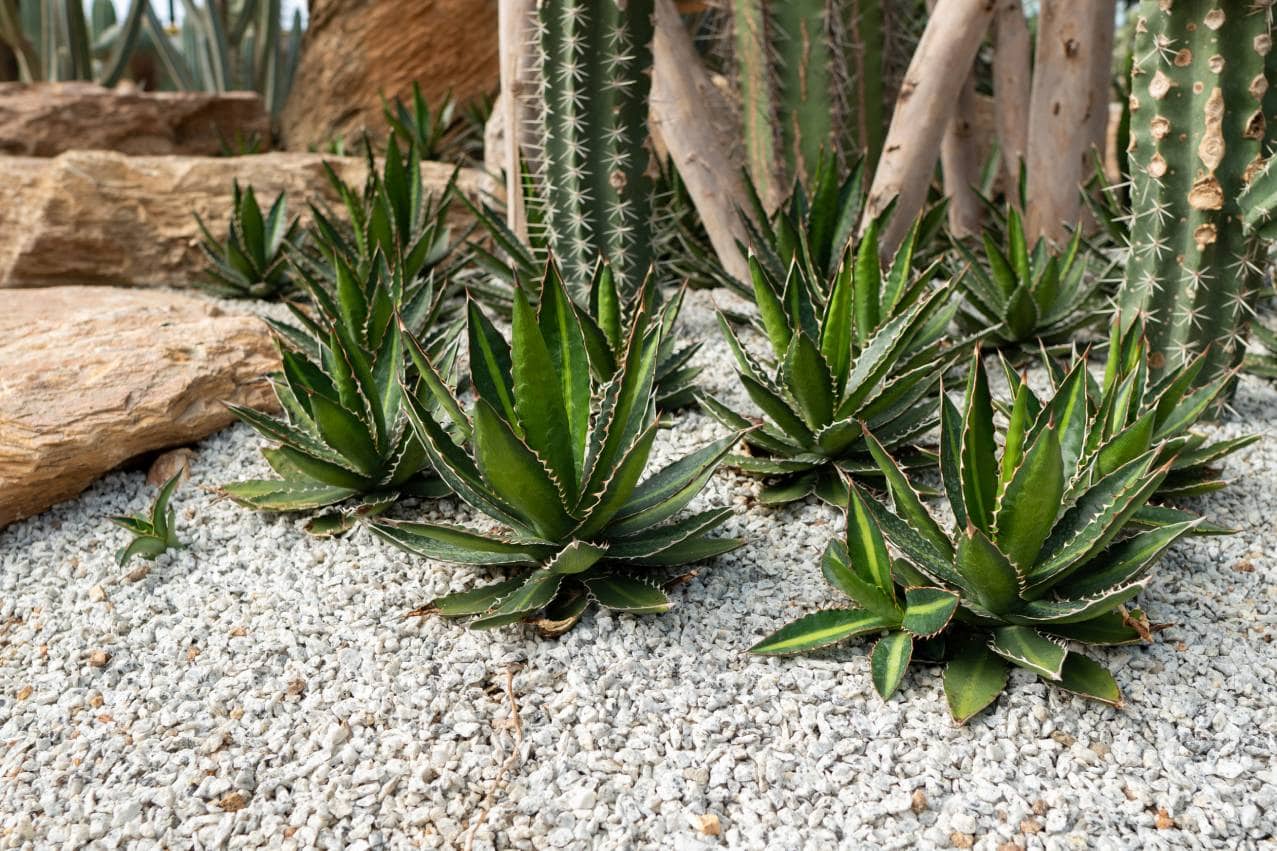
| Scientific Name: | Coryphantha robustispina |
| Shape: | Cylindrical |
| Range: | All of New Mexico |
This cactus gets its name from the shape of a pineapple. It also happens to be the cacti in central New Mexico that flowers the earliest and is the hardiest of all the barrel cacti. When it blooms in early spring, the Chihuahuan Pineapple Cactus has delicate white blooms with a touch of pink. The flowers form on the top of the cacti on a single stem and are about an inch wide.
2. Horse Crippler Cactus
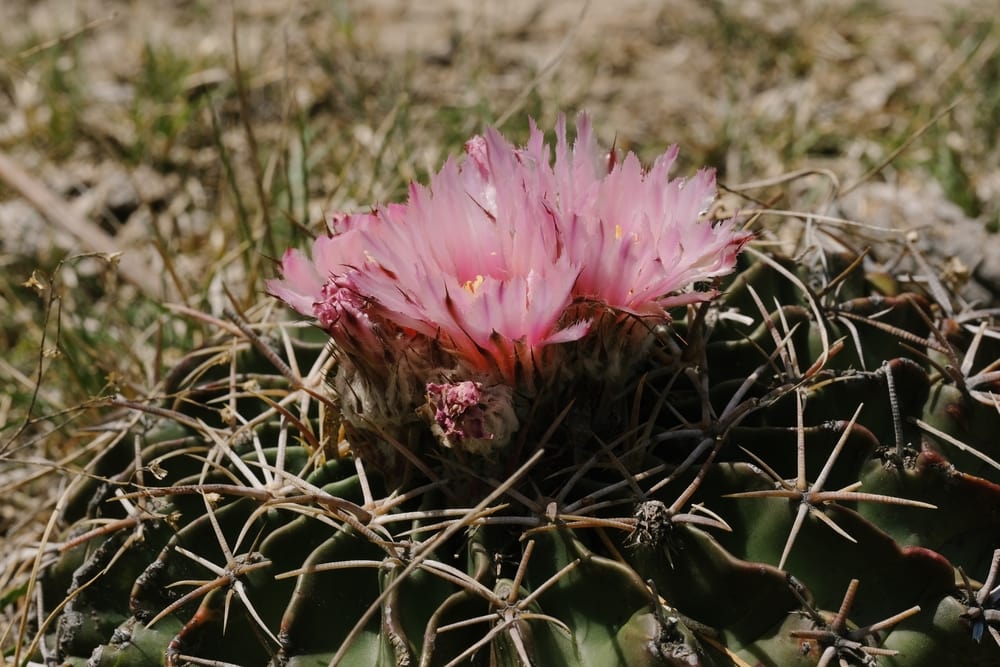
| Scientific Name: | Echinocactus texensis |
| Shape: | Round |
| Range: | SE New Mexico |
This unusually named cactus plant got its name because it sits so low to the ground and is hard to see. Due to that fact, many horses (and people) have stepped on them and hurt themselves. Their thorns, which are thick and durable, are about 2 to 3 inches long and can be very painful. The Horse Crippler Cactus has fruit similar to prickly pears and just as sweet. Some residents collect the seeds and, after roasting them, grind them into flour.
3. Small-flowered Fishhook Cactus

| Scientific Name: | Scleocactus parviflorus |
| Shape: | Cylindrical |
| Range: | NW New Mexico |
These cacti are known for their hooked spines that, as you might have guessed, look like a fish hook. Many of their spines are so strong and durable that they’ve been used for actual fishhooks. They typically have four to sic central spines pointing in various directions and, in spring, bloom pink, yellow and purple flowers. They are small cacti that grow less than 15 inches in height. What’s interesting is that, due to the shape of their spines, they look almost “shaggy” when seen from a short distance.
4. Night-blooming Cereus
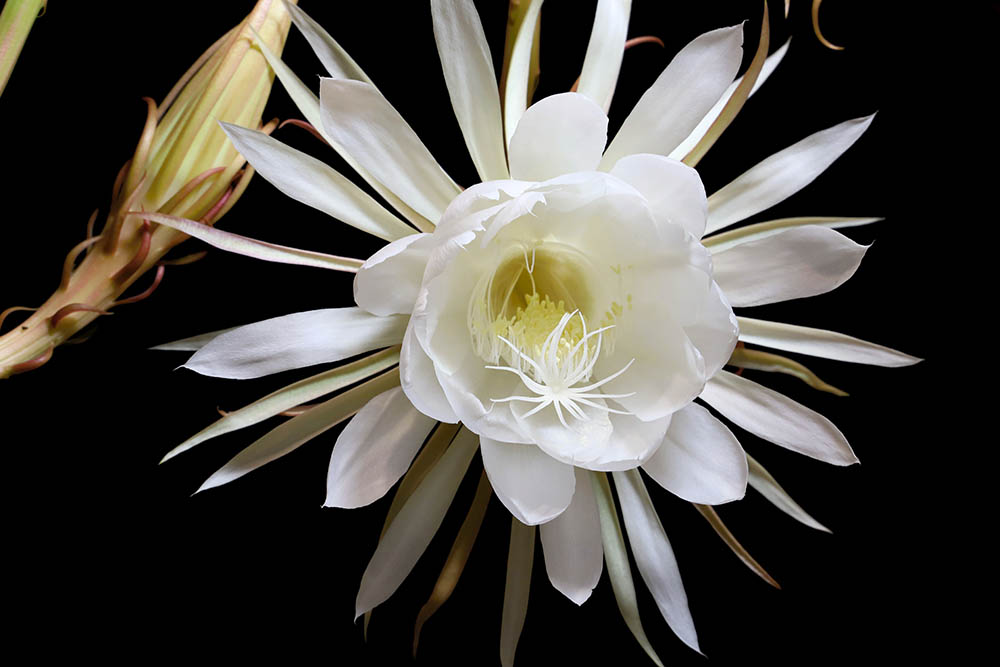
| Scientific Name: | Peniocereus Greggii |
| Shape: | Long, thin and branched |
| Range: | SW New Mexico |
When many people think of cactus plants, they think of the Night-blooming Cereus, which looks like the cactus we’ve all seen in TV shows and movies. This particular species is known for having flowers that bloom after sunset and a lovely scent similar to vanilla. Not only does this cactus bloom after dark, it usually only blooms for a single night.
5. Mountain Ball Cactus
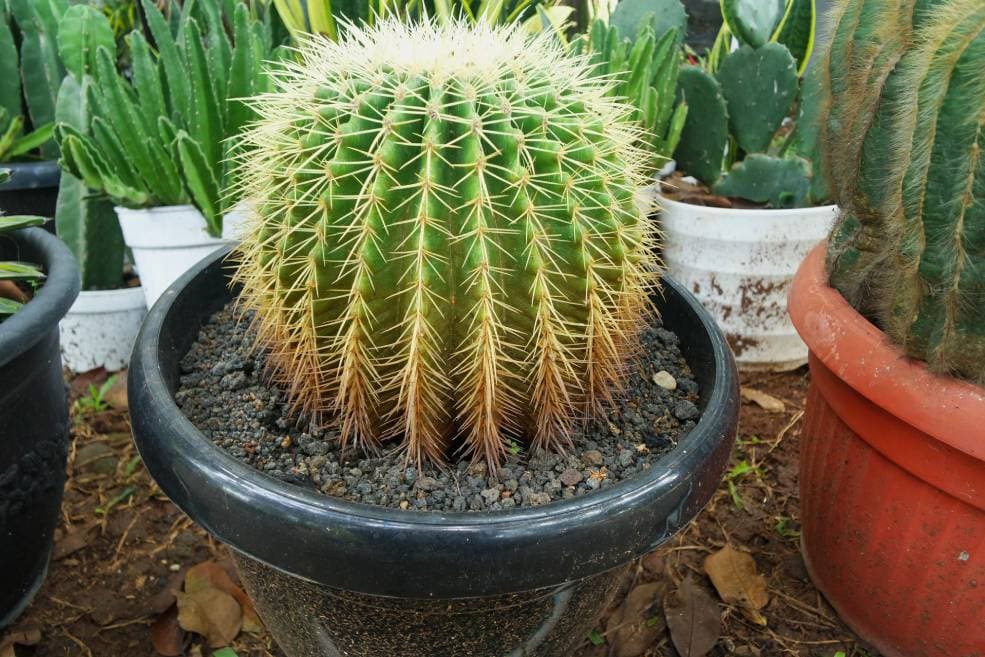
| Scientific Name: | Pediocactus simpsonii |
| Shape: | Cylindrical and very spiny |
| Range: | Scattered around New Mexico |
The Mountain Ball Cactus is one of the most popular among gardeners and has a pleasing spherical shape. Gardeners love its shape and the precious pink, yellow, and white flowers that the Mountain Ball Cactus produces in early spring. Unfortunately, this attractive species is endangered or threatened throughout most of its range.
6. Plains Prickly Pear

| Scientific Name: | Opuntia Polyacantha |
| Shape: | Flat, ground spreading |
| Range: | All over New Mexico |
There are several different types of prickly pear cacti, including the Plains Prickly Pear. All are known for having very sweet fruits, referred to as “tunas.” You can use the tunas in various foods, including jams and juices. You can also use them to make medicines and dyes for clothing. The Plains Prickly Pear can survive in various environments as it stores excess water in its pads. It is also more tolerant of cold weather and, depending on the species, will have a wide variety of colorful blooms.
7. Tulip Prickly Pear
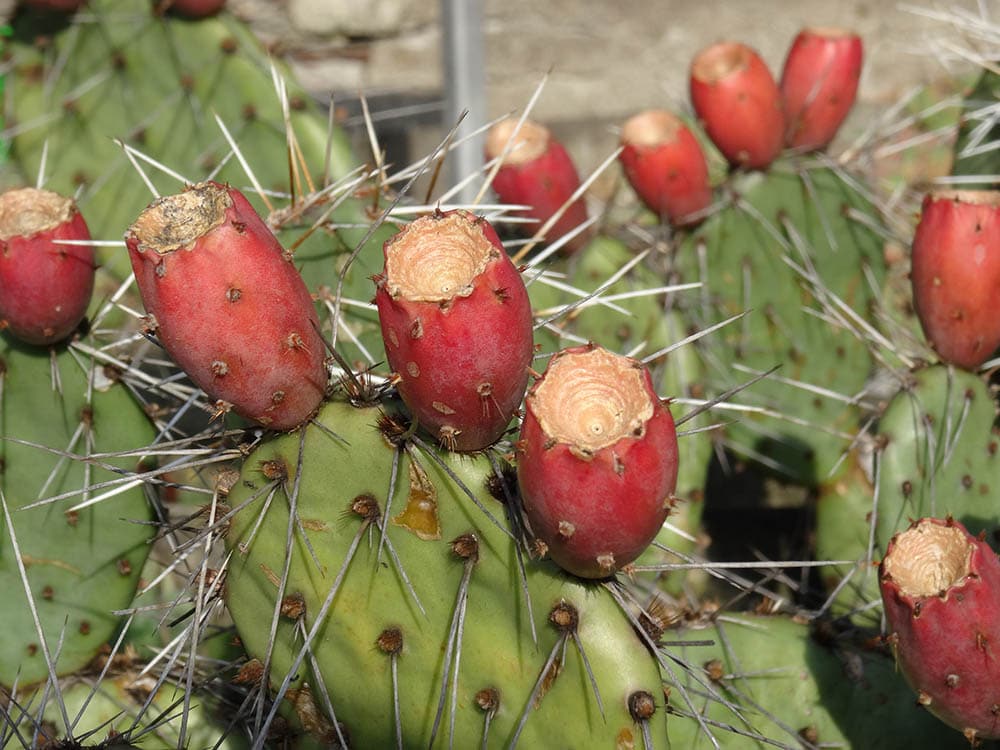
| Scientific Name: | Opuntia Phaeacantha |
| Shape: | Low to the ground in clumps |
| Range: | All over New Mexico |
Growing close to the ground in clumps or clusters, the Tulip Prickly Pear has few spines on its base but plenty of them further down the plant. They are known to hybridize, forming natural hybrid plants with other cactus species. Also, their dark green pads have been known to turn purple around the tips during dry weather. They bloom in early spring and have flowers in many colors, including orange, yellow and pink.
8. Purple Prickly Pear Cactus
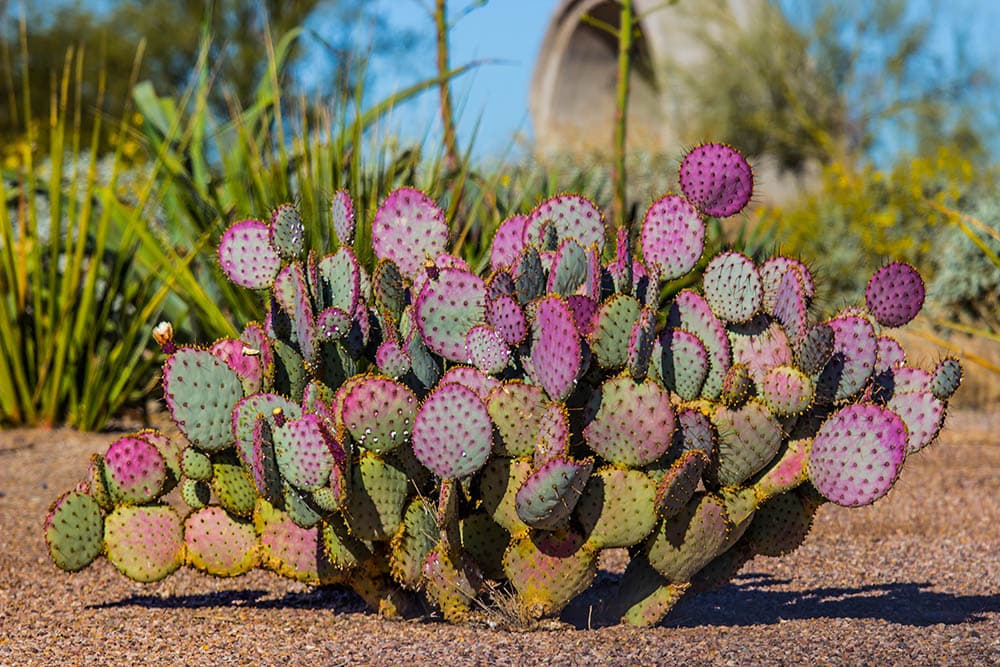
| Scientific Name: | Opuntia Macrocentra |
| Shape: | Low clusters |
| Range: | Southern New Mexico |
The purple prickly pear cactus looks more like a shrub than a cactus plant. It grows 4 or 5 feet wide, and during the winter, the leaves turn a light purple color that is very distinctive. One of the other distinctive features of a Purple Prickly Pear Cactus is that, unlike other prickly pear varieties, they have very few or no spines. They also have a lovely scent of jasmine that scientists believe is used to attract insects at night. The Purple Prickly Pear has been used to make various foods, including jelly and candy.
9. Texas Prickly Pear
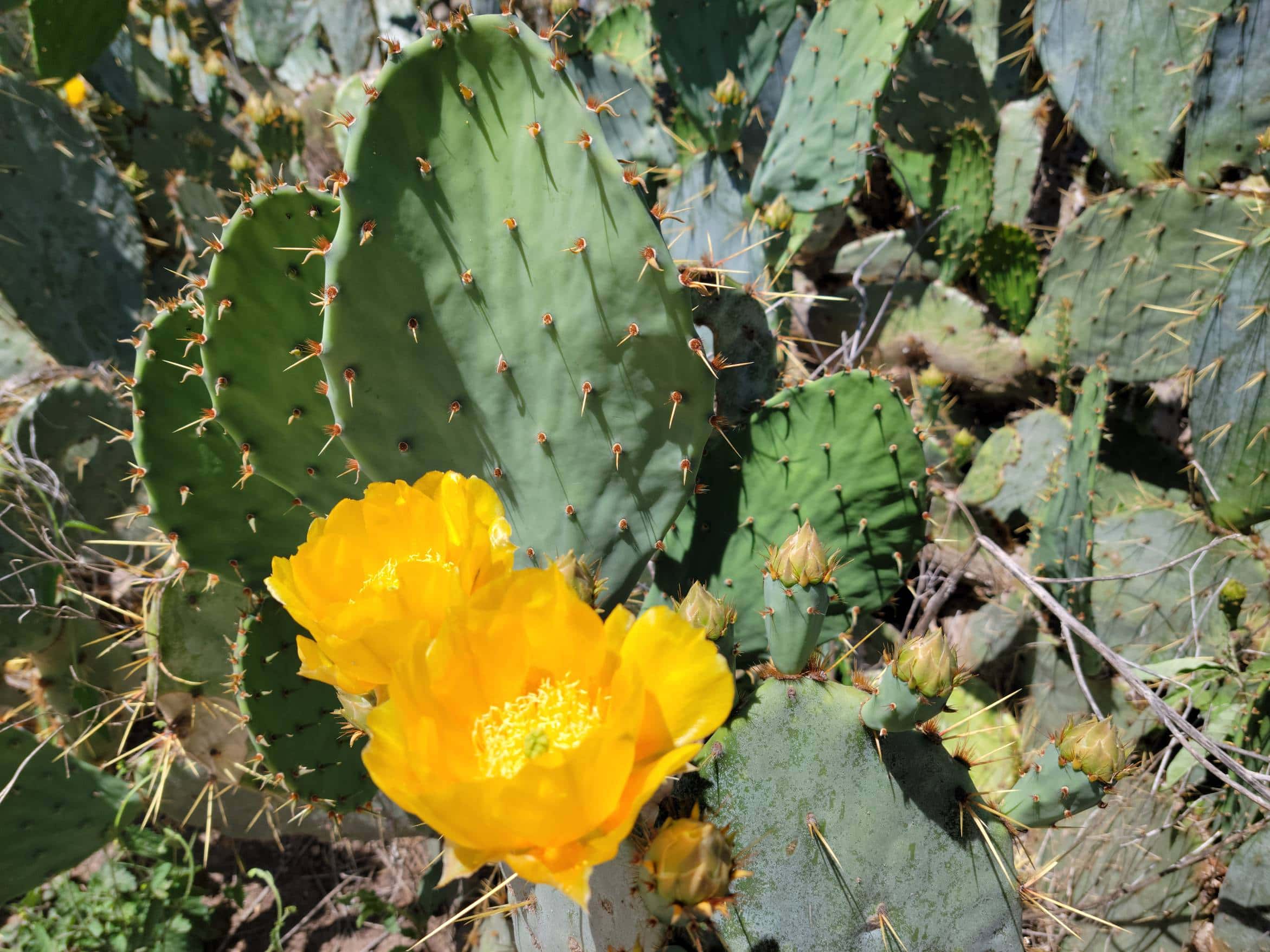
| Scientific Name: | Opuntia lindheimeri |
| Shape: | Low clusters |
| Range: | SE New Mexico |
The Texas Prickly Pear is another that many see in their mind’s eye when they think of cacti. That’s due to their big, flat pads that can be up to a foot long and their sharp spines that can grow to 2 inches. They can be large plants, reaching 5 to 6 feet in length, but as they grow low to the ground in clusters, they look much smaller. However, their beautiful yellow flowers are hard to miss and are somewhat large at nearly 3 inches in diameter.
10. Brittle Prickly Pear

| Scientific Name: | Opuntia strigil |
| Shape: | Shrub |
| Range: | All over New Mexico |
The thick, almost round pads of the Brittle Prickly Pear are hard to miss. They grow in large clusters that can reach 3 feet across, but they grow sideways more than they grow upward. In late spring and early summer, the Brittle Prickly Pear blooms with small, yellow flowers, after which its purple-colored fruits appear.
11. Barbary Fig
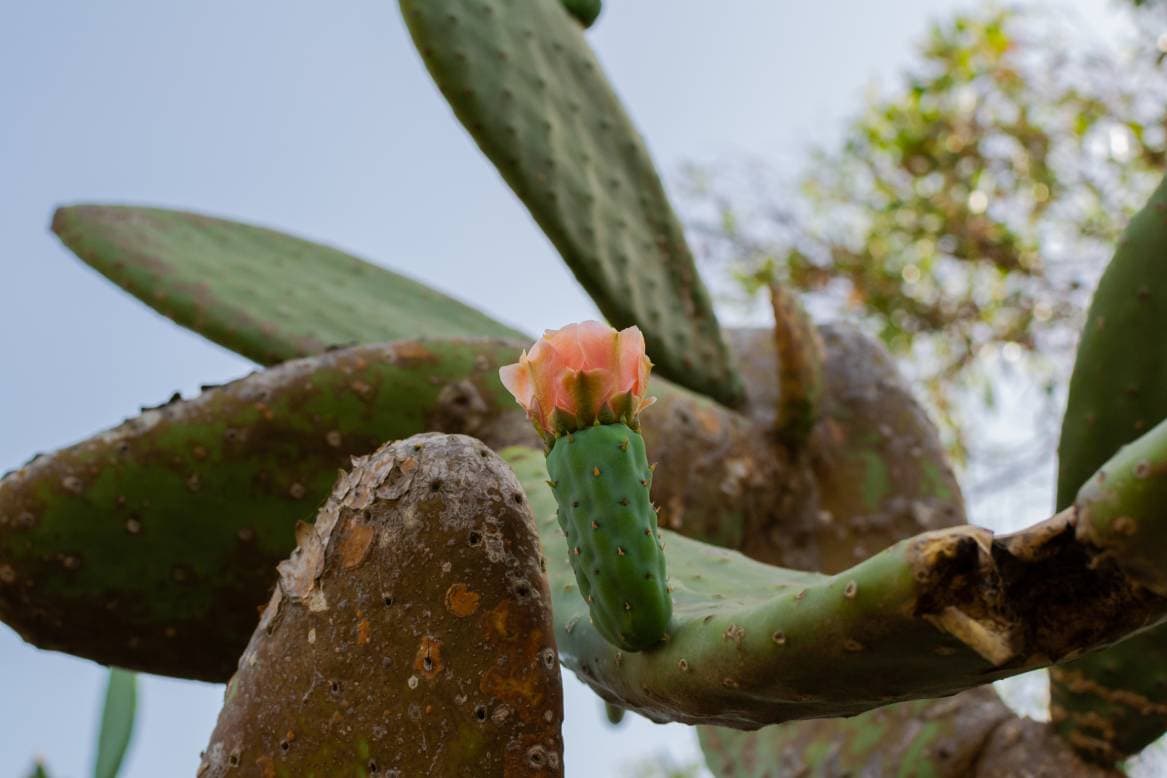
| Scientific Name: | Opuntia ficus-indica |
| Shape: | Tall, wide, branched |
| Range: | All over New Mexico |
The Barbary Fig is one of the fastest-growing cacti and can grow to a massive size. They have extra-large pads that can grow to nearly 2 feet in diameter and are devoid of spines (thank goodness). The central trunk of the Barbary Fig looks more like a tree than a cactus, and its flowers, which are delicate and small, are an orange-red color. They also last much longer than the blooms on most cacti. It’s believed that the Barbary Fig is a hybrid cultivated many years ago to have no spines, so it would be much easier to eat.
12. Mojave Prickly Pear

| Scientific Name: | Opuntia Erinacea |
| Shape: | Low spreading |
| Range: | NW New Mexico |
This odd-looking cactus is also known as the Grizzly Bear Prickly Pear or Hedgehog Prickly Pear due to its abundance of dense, white spines that make it look shaggy. On younger Mojave Prickly Pears, the spines are thicker and shorter, but as it matures, they gain their longer, shaggy appearance. They can grow up to 10 feet across but are relatively short and stay low to the ground. Mojave Prickly Pears can also tolerate cold better than most cacti and can be found at elevations of 7,000 feet above sea level.
13. Pancake Prickly Pear

| Scientific Name: | Opuntia Chlorotica |
| Shape: | Tall, flat, with rounded pads |
| Range: | SE Nevada |
This fantastic cactus can reach 8 feet in height and has hundreds of thick, round pads covered in golden-yellow spines measuring 2 inches long. Higher pads have fewer spines than the lower, older pads, but all of them are about 5 inches in diameter and close to perfectly round, hence the name Pancake Prickly Pear. Although primarily found in SE New Mexico, this cactus can also be seen in 5 other states.
14. Heyder Pincushion Cactus

| Scientific Name: | Mammillaria Heyderi |
| Shape: | Flat, disc |
| Range: | SW New Mexico |
The Heyder Pincushion Cactus is tolerant of frost and can be found at elevations from 3,000 to 6,000 feet above sea level. Its shape is one of the most unusual among cacti; it is almost flat and grows outward rather than upward to about 6 inches. It’s also the only cactus with a milky sap in the Southwest.
15. Arizona Fishhook Cactus
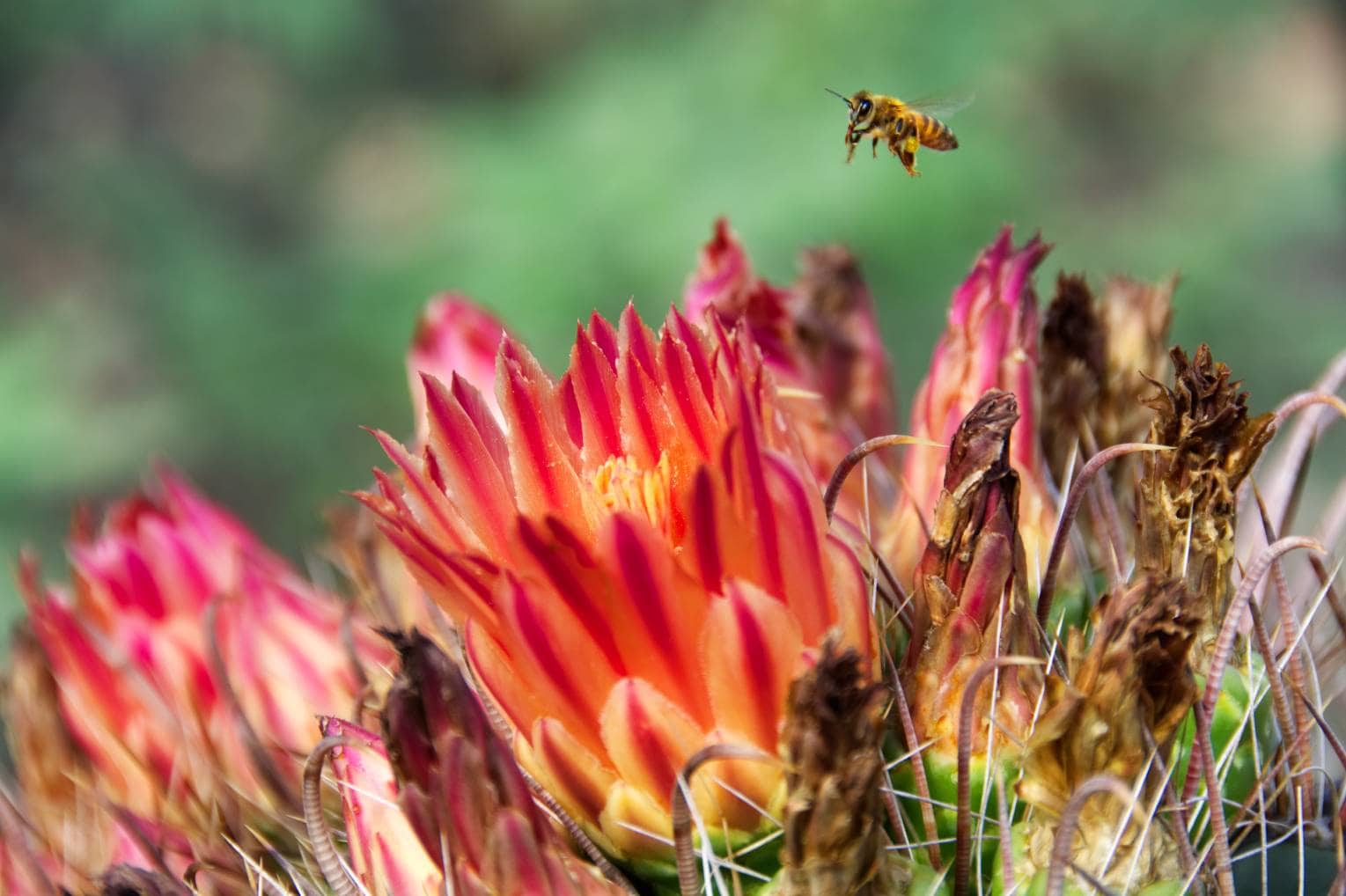
| Scientific Name: | Mammillaria Grahamii |
| Shape: | Cylindrical |
| Range: | SW New Mexico |
At only 6 inches tall and covered with short spines, the Arizona Fishhook Cactus is easy to miss. However, in late spring and early summer, they have attractive pink flowers with a white border that circles the plant’s apex. The species is a solitary one that occasionally will form small clusters. Arizona Fishhook Cacti often grow under bushes and tall grass, making them even easier to miss.
16. Graham Prickly Pear
| Scientific Name: | Grusonia grahamii |
| Shape: | Low clumps |
| Range: | Southern New Mexico |
One of the distinguishing features of the Graham Prickly Pear is that they form a sort of mat on the ground and, in most cases, completely cover it where they’ve grown. They have very short, cylindrical stems often hidden by their thick spines, which are a grayish-white color. They also love the hottest parts of New Mexico, Nevada, and Texas, where they thrive. The Graham Prickly Pear is often camouflaged by the earth since it grows in gravelly areas that match the color of its spines.
17. Arizona Barrel Cactus
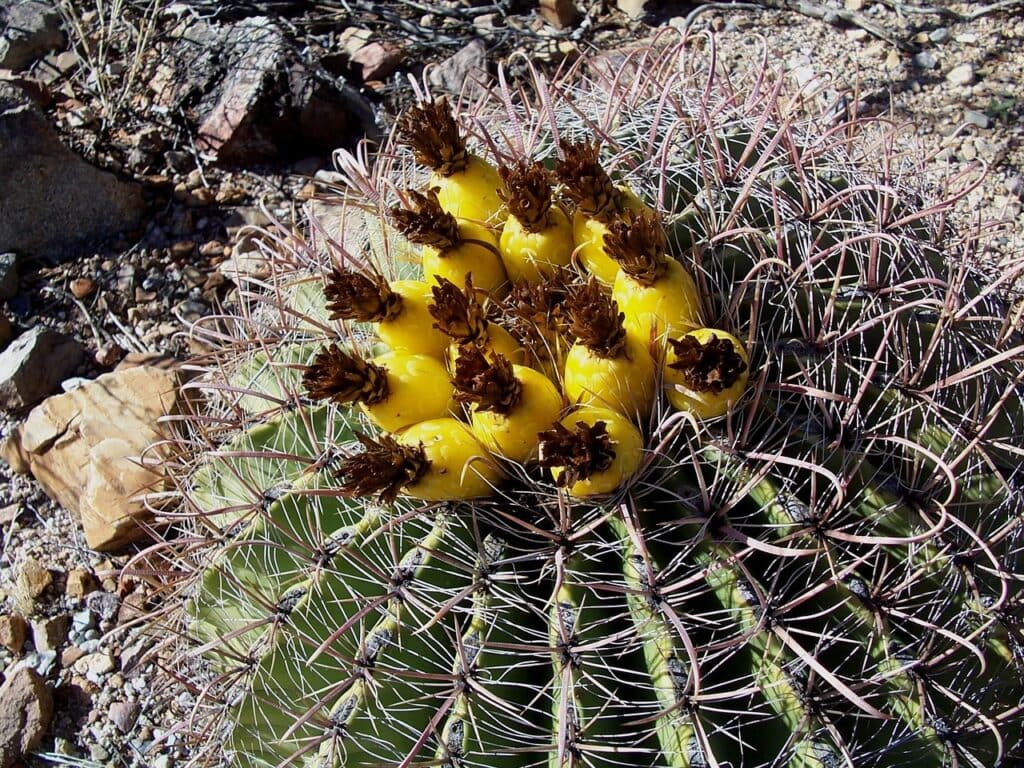
| Scientific Name: | Ferocactus wislizeni |
| Shape: | Cylindrical |
| Range: | SW New Mexico |
These amazing cacti can grow to 10 feet in height but usually top off at about 6 feet before they topple over and die. Like some of the other cacti on the list, the Arizona Barrel Cactus tolerates frost well and can be found at elevations of 5,000 feet above sea level. The distinctive yellow flowers form a circle at the apex of the plant that gives way to yellow fruit, and their spines are a pale, red color. The Arizona Barrel Cactus has also been known to topple over but continues to grow.
18. Texas Barrel Cactus
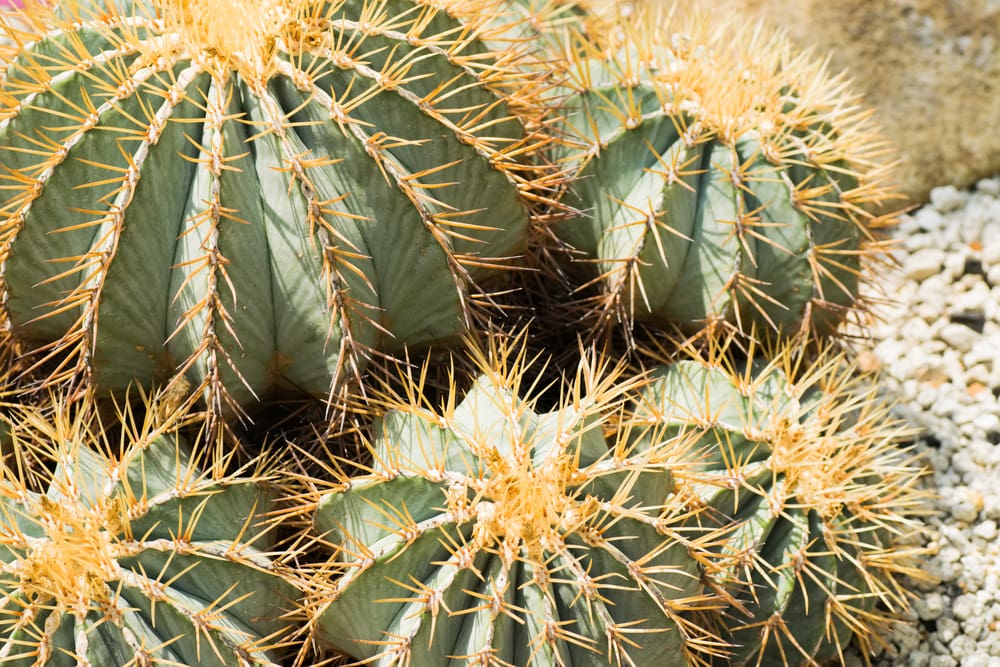
| Scientific Name: | Ferocactus Hamatacanthus |
| Shape: | Round, small clumps |
| Range: | Round, small clumps |
This usually solitary cactus can grow to about 2 feet tall and has a wide stem with long, thin, tan spines. The spines are not to be trifled with and can puncture skin easily. It is a frost-tolerant species but rarely found at high elevations. The Texas Barrel Cactus has a distinctive central spine that is hooked and can grow up to 6 inches in length.
19. Cob Beehive Cactus
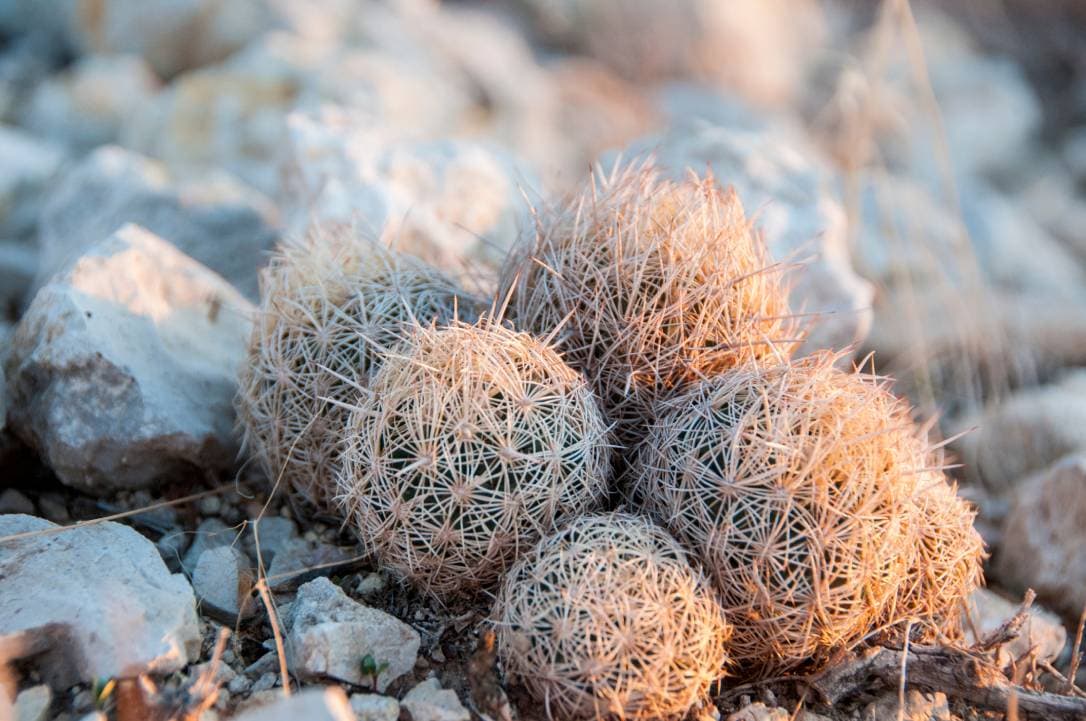
| Scientific Name: | Escobaria tuberculosa |
| Shape: | Small globes and clusters |
| Range: | Southern New Mexico |
This fuzzy-looking cactus loves the grass and scrublands of southern New Mexico. It is covered in short, grey, and white spines forming a latticework on the top. In late spring, you’ll see the Cob Beehive Cacti’s pale, pink flowers change to beautiful, bright-red fruit later in the season.
20. Nylon Hedgehog Cactus
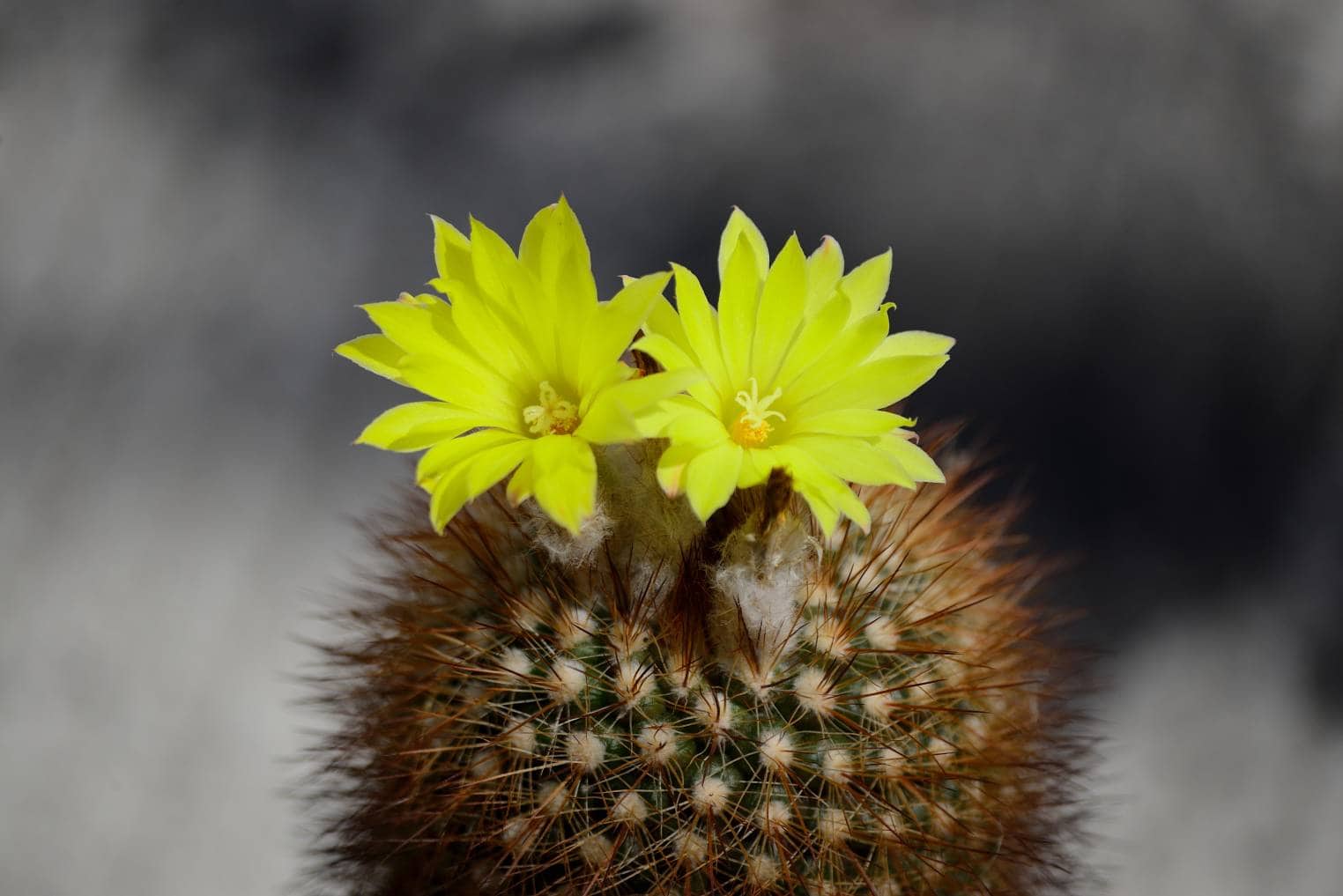
| Scientific Name: | Echinocereus viridiflorus |
| Shape: | Cylindrical clusters |
| Range: | All over New Mexico |
The Nylon Hedgehog Cactus, like some others on this list, is tolerant to frost and can be found at higher elevations. Unlike most cacti, this one grows its flowers along its stems rather than at its apex. They can grow to 12 inches tall but are usually shorter, staying solitary most of the time but forming small clusters occasionally.
21. Claret Cup Cactus
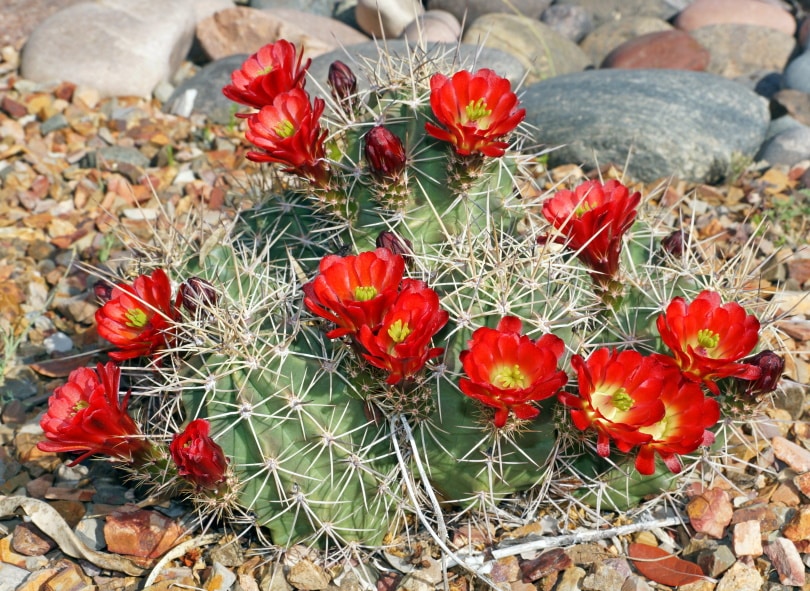
| Scientific Name: | Echinocereus triglochidiatus |
| Shape: | Small with clusters (trios) of spines |
| Range: | Southern New Mexico |
The Claret Cup Cactus gets its name from the lovely chalice-shaped flowers it produces every spring. Several features set this cactus apart, including its sweet fruit. It can grow up to 5 feet in diameter and produce over 75 stems. Even though the fruit is full of spines when it first starts to grow, it drops off when it ripens. The Claret Cup Cactus is also known as the Strawberry Hedgehog since the blooms, when small, look like strawberries.
22. Arizona Rainbow Cactus
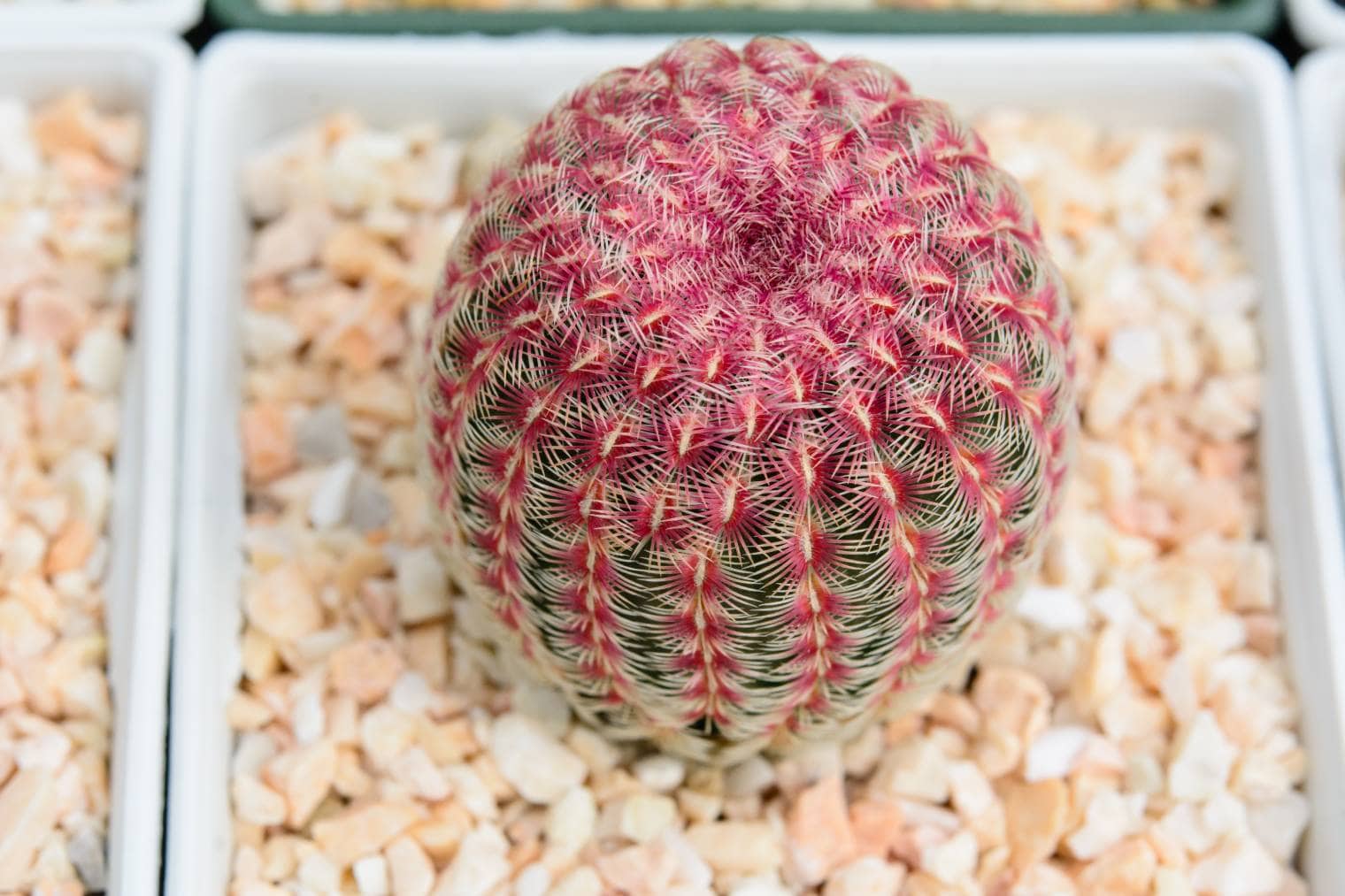
| Scientific Name: | Echinocereus Rigidissimus |
| Shape: | Single, no branches |
| Range: | SW New Mexico |
One of the best ways to find an Arizona Rainbow Cactus is to look for the gorgeous pink flowers that are larger than the cactus itself. You can also find them at high altitudes in New Mexico because they are tolerant of frost. The Arizona Rainbow Cactus gets its name from its various colored spines, including white, grey, brown, and even pink, formed in a ring like a rainbow.
23. Lace Hedgehog Cactus
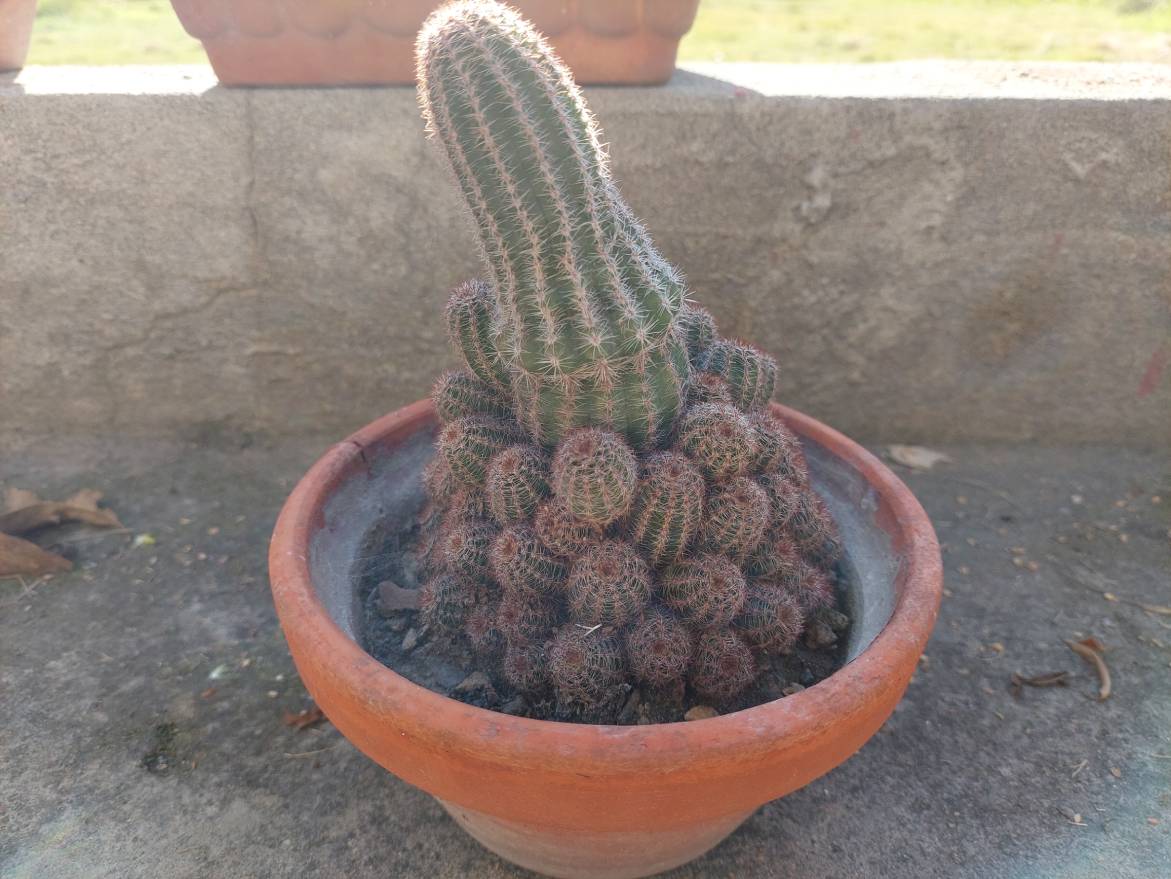
| Scientific Name: | Echinocereus Reichenbachii |
| Shape: | Cylindrical and sometimes branched |
| Range: | Eastern New Mexico |
Unfortunately, the Lace Hedgehog Cactus is one of several species that are endangered. It has very short spines that vary in color but typically are white or yellow with dark tips. Like most Hedgehog cacti, the Lace Hedgehog has so many spines that they almost cover the plant, but they are very close to the surface and make it look smoother.
24. Texas Rainbow Cactus
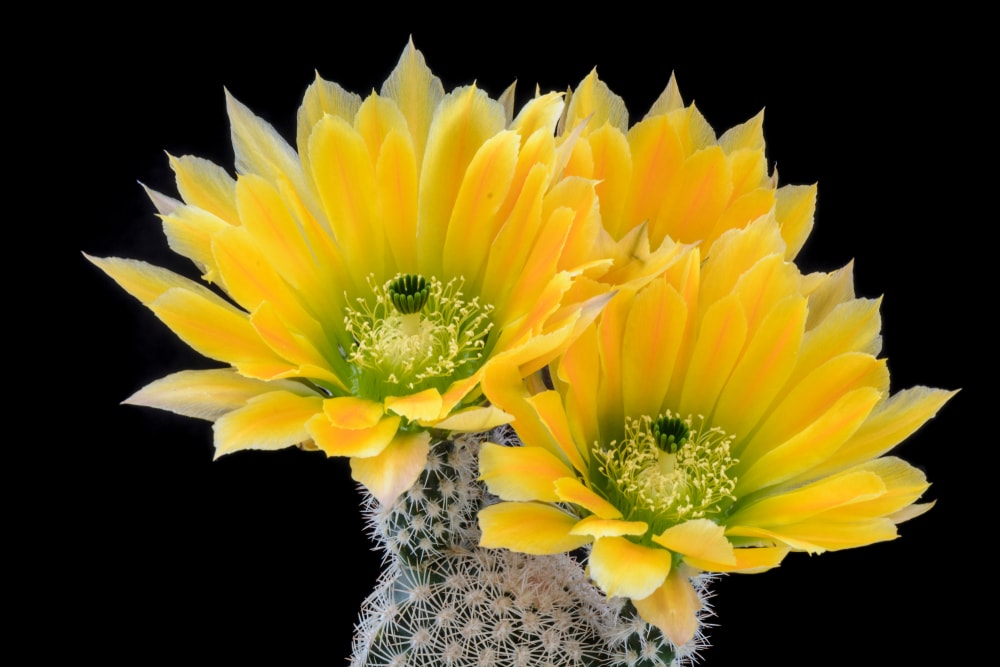
| Scientific Name: | Echinocereus Dasyacanthus |
| Shape: | Small clusters, no branches |
| Range: | Southern New Mexico |
The Texas Rainbow Cactus is known for its delightful, bright yellow flowers that sit right in the center of its apex. The flowers can be so large that they dwarf the cactus, after which they grow bright green fruit. Like the Arizona Rainbow Cactus, the Texas variety has bands of differently colored spines that look like a rainbow, if a bit muted.
25. Brown Flowered Cactus

| Scientific Name: | Echinocereus Chloranthus |
| Shape: | Cylindrical with occasional branches |
| Range: | Southern New Mexico |
One of the more unusual-looking cacti in New Mexico, the Brown Flowered Cactus, grows about 10 inches tall. What makes it unusual is that it’s covered by a dense layer of spines that vary in color from brown to red and white. The spines give it a fluffy look that is even more accentuated when its bright red flowers bloom.
26. Arizona Claret Cup Cactus

| Scientific Name: | Echinocereus Arizonicus |
| Shape: | Cylindrical clumps |
| Range: | SW New Mexico |
It’s difficult to see the Arizona Claret Cup Cactus due to the vast network of spines covering it completely. Typically, it forms small clumps with stems up to 15 inches tall and 2 to 4 inches in diameter. As it ages, its central spines turn gray. What sets the Arizona Claret Cup Cactus apart is its delicate but deep, round flowers that look like a claret cup.
27. Cane Cholla
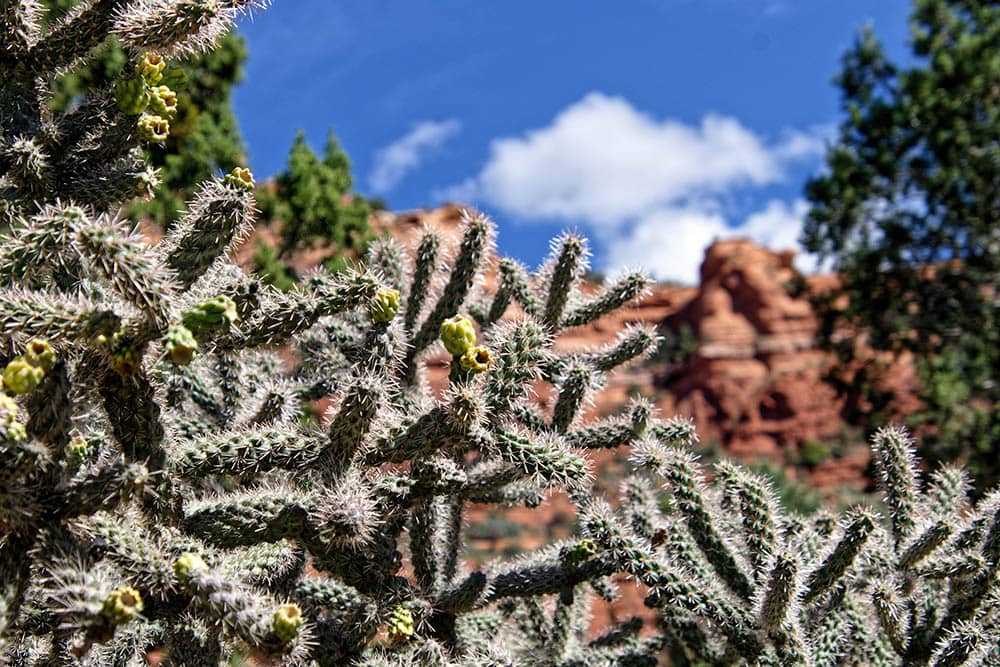
| Scientific Name: | Cylindropuntia Spinosior |
| Shape: | Branched with a central trunk |
| Range: | West New Mexico |
The Cane Cholla is the most common species of cholla in the state and can grow to a whopping 8 feet tall. You shouldn’t touch a Cane Cholla since the spines are very finely barbed and, if they get into your skin, are very difficult to remove. It’s easy to spot a Cane Cholla because of its size, silhouette, and yellow fruit. When it blooms, usually in late spring, the amazing cactus has gorgeous purple flowers. Many people have used the thorns of the Cane Cholla to make canes, which is where its name comes from.
28. Christmas Cholla

| Scientific Name: | Cylindropuntia Leptocaulis |
| Shape: | Shrub |
| Range: | All over New Mexico |
This Cactus is called the Christmas Cholla because, after its yellow flowers bloom in late summer, it grows bright red fruit that stays until February or March. This shrub cactus only grows to about 4 feet tall. It also tends to look for other, larger bushes for protection from animals and the sun. One feature that distinguishes it from the rest of the cholla species is that it has the thinnest stems.
29. Tree Cholla

| Scientific Name: | Cylindropuntia Imbricata |
| Shape: | Tall and branched with a central trunk |
| Range: | All over New Mexico |
The Tree Cholla is a magnificent cactus that some believe rivals the rose bush for beautiful, fragrant flowers. They grow 6 feet high and 5 feet wide, making them a rather large species. During the winter, large yellow fruit can be seen hanging from the Tree Cholla’s stems. It has many cylindrical branches full of short needles, forming incredibly diverse structures on larger plants. The woody skeleton of a dead Tree Cholla is often used to make crafts.
30. Nipple Beehive Cactus

| Scientific Name: | Coryphantha macromeris |
| Shape: | Tubercle clusters |
| Range: | SE New Mexico |
Although it’s common in SE New Mexico, the Nipple Beehive Cactus is also hard to spot since it likes to grow under other, larger plants or in tall grass. It remains solitary for the first few years of life and then starts forming small clusters. They have green fruit, which appears in early fall after their purple flowers bloom in late summer. Beehives prefer shade and usually don’t grow more than 6 inches high.
Final Thoughts
As we’ve seen, New Mexico has a wide variety of unique, fascinating, and beautiful cacti. We hope the information has been interesting and informative and provides a better look at the amazing plants. They are all lovely in their own ways, and many have fruits you can use to make food and medications. Many of these attractive cacti will also make lovely plants for your home, but be careful how you handle them!
Featured Image Credit: Miguel Urieta, Unsplash
Contents
